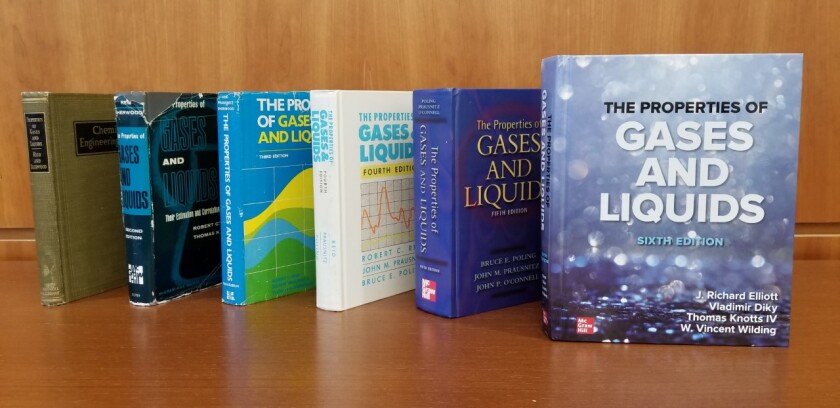For accurate information about chemical compounds, the engineering industry looks no further than BYU.

BYU chemical engineering professors Vincent Wilding and Thomas Knotts recently completed work on a new edition of The Properties of Gases and Liquids, a standard handbook for industry engineers, along with co-authors J. Richard Elliott, professor emeritus at the University of Akron, and Vladimir Diky, scientist at the National Institute of Standards and Technology.
The book details the properties of hundreds of chemical compounds, discusses experimental methods for measuring these properties, and presents techniques for estimating property values when experimental values are not available.
“It's been around a long time—long before I started studying chemical engineering,” Knotts said. “It's kind of like the handbook on thermophysical properties.”
Wilding added, “This book will be used by scientists and engineers around the world.”
The Properties of Gases and Liquids was first published in 1958 and subsequently re-issued in 1966, 1977, 1987, and 2001. This sixth and newest edition is a long-awaited update.
“Because it hadn't been revised for 20 years, there [were] a lot of updates that had to be done,” Knotts said. “And it's not just revising; it’s testing all these methods. ... We had to create ways to test them all to see how accurate they were.”
Wilding and Knotts were well suited to be co-authors on the book because of their experience working on the Design Institute for Physical Properties (DIPPR) database, a leading inventory of properties of chemical compounds. A group of over 50 chemical companies, from Dow to Dupont, sponsor research for the database under the administration of the American Institute of Chemical Engineers (AIChE).
Many universities and other institutions have competed for the DIPPR project, but BYU has successfully maintained the project contract for over 25 years. Faculty, staff, graduate students, and undergraduate students collaborate on the database.
“It's pretty competitive, but we know what we're doing, and we involve a lot of students, so it fits well with the mission of the university,” Knotts said. “You kind of have to be on your toes because it's actually being used in real life.”
Wilding added that “the companies that sponsor this work, who rely on the quality and accuracy of the DIPPR database, are very pleased with the work done by the BYU research team.”
Projects like DIPPR and Properties of Gases and Liquids help industry engineers to “make every product that you can think of,” Knotts said. Accurate information about chemical compounds is especially important for developing more eco-friendly products. As an example of this, Knotts cited the 1987 Montreal Protocol, a global agreement that banned the use of certain chemicals used in air conditioning after researchers discovered that these substances were damaging the earth’s ozone layer.
“We had to find alternative chemicals that still had the same properties that we needed to do air conditioning but would not harm the environment,” Knotts explained. “And databases like this help us do that whole process design: find chemicals that have similar properties but are more environmentally friendly.”
Knotts hopes that in addition to helping industry engineers, DIPPR and Properties of Gases and Liquids will enhance the status of BYU and its students.
“It helps the prestige of the university, which ultimately helps the students,” Knotts said. “It demonstrates that students coming out of BYU are learning state-of-the-art stuff.”